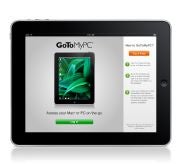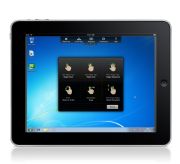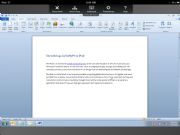They are now in retreat. Employees are bringing in the technology they
use at home and demanding the I.T. department accommodate them. The
I.T. department often complies.
Some companies have even surrendered to what is being called the
consumerization of I.T. At Kraft Foods, the I.T. department’s
involvement in choosing technology for employees is limited to handing
out a stipend. Employees use the money to buy whatever laptop they want
from Best Buy, Amazon.com or the local Apple store.
“We heard from people saying, ‘How come I have better equipment at
home?’ ” said Mike Cunningham, chief technology officer for Kraft
Foods. “We said, hey, we can address that.”
Encouraging employees to buy their own laptops, or bring their mobile
phones and iPads from home, is gaining traction in the workplace. A
survey published on Thursday by Forrester Research found that 48
percent of information workers buy smartphones for work without
considering what their I.T. department supports. By being more
flexible, companies are hoping that workers will be more comfortable
with their devices and therefore more productive.
“Bring your own device” policies, as they are called, are also shifting
the balance of power among electronics makers. Manufacturers good at
selling to consumers are increasingly gaining the upper hand, while
those focused on bulk corporate sales are slipping.
The phenomenon is upending the corporate market, which has
traditionally hinged on electronics makers cultivating tight
relationships with I.T. departments. Dell, Hewlett-Packard and Research
in Motion, maker of the BlackBerry, have long dominated the workplace,
but Apple and its consumer-friendly blockbusters — the
iPhone,
iPad and MacBook — have made major inroads.
It’s not just electronics. A variety of online services that were
originally aimed at consumers are crossing over. Google is hoping that
people using its Gmail and Google Docs products will produce a
guerrilla movement inside corporations strong enough to displace
Microsoft and its Office suite of software.
Skype, the Internet calling service that started as a way to call
friends at no charge, is pushing into the workplace. Dropbox,
originally pitched as a way for people to store and share personal
documents online, has also gained a foothold in businesses.
“You shouldn’t reject things that make employees more productive, and
if those things happen to be consumer technologies, so be it,” said Ted
Schadler, an analyst with Forrester Research.
Corporate I.T. departments often resist allowing consumer technology on
their networks because of security concerns. Adding a hodgepodge of
devices and services also complicates their job.
But I.T. departments are gradually warming to the idea simply because
their bosses left them little choice. The I.T. staff may grieve for
their lost power, but they do it.
“They’re over the denial and anger stage, and now they are in the
acceptance and ‘How can we help?’ stage,” said Mr. Schadler, who
co-wrote the book “Empowered,” which addresses consumer technology in
the workplace. “What broke the camel’s back was the iPad, because
executives brought it into the company and said ‘Hey, you’ve got to
support this.’ ”
A survey of more than 1,700 information workers earlier this year by
Forrester showed how much of the equipment-buying decision rests with
employees. Nearly half of the respondents said that they bought their
work smartphone while 41 percent said their employer paid; 9 percent
said the cost was shared between the two.
Netflix’s “bring your own device” policy takes into account the blurring of the lines between work and personal time.
“As long as they’re productive, innovative and engaged, we’re happy,”
said Steve Swasey, a spokesman for Netflix. Kraft Foods’ “bring your
own laptop” policy started a year and half ago, and now around 800
employees receive a stipend — Kraft declined to say how much — to buy
either a Windows or Mac computer. Workers who want laptops that cost
more than their stipend must pay for the difference out of their own
pockets.
Kraft’s program is not quite companywide, however. Executives who
handle confidential information, people who use laptops to operate
production equipment, and most factory workers are ineligible. “It’s a
relatively small part of the company,” Mr. Cunningham. “But it
addresses the majority of the noise and complaining.”
Letting workers bring their iPhones and iPads to work can also save
companies money. In some cases, employees pay for equipment themselves
and seek tech help from store staff rather than their company’s I.T.
department. “You can basically outsource your I.T. department to
Apple,” said Ben Reitzes, an analyst with Barclays Capital.
A similar B.Y.O.D. program at Citrix Systems, a software maker that
also helps its clients implement such programs, saves the company about
20 percent on each laptop over three years. Of the 1,000 or so
employees in Citrix’s program, 46 percent have bought Mac computers,
according to Paul Martine, Citrix’s chief information officer. “That
was a little bit of a surprise.”
There are downsides. Employees who want electronics that cost more than
their companies are willing to pay or who desire devices like iPads
that often fail to qualify for a stipend, don’t like the additional
expense of buying their own devices. Nor do all workers look fondly on
spending their weekend at Best Buy to get a laptop fixed (unpaid, of
course.)
Ahmed Datoo, chief marketing officer for Zenprise, which helps
organizations manage mobile devices on their networks, said some
government agencies that handle classified documents use his service to
disable cameras on employee smartphones inside the building.
Some financial firms blacklist Facebook, among others, to ensure that
all conversations take place on approved services that can be archived.
With its strength in consumer products, Apple is the obvious winner
from more flexible corporate technology spending. Sales of Apple
devices are strong while the rest of the PC market is weak, although
how many of its phones, tablets and laptops are for use in the office
is difficult to say.
Meanwhile, sales at places like Dell and RIM that focus on corporations
are stagnant or sinking. H.P., which is the leading PC maker and is
strong in consumer PCs, is considering jettisoning that business to
concentrate on corporate software and services. It even killed off its
TouchPad, which was to rival the iPad, and its cellphones. This retreat
is occurring because many of those companies are finding they just
aren’t that good at selling to consumers. “What you’re seeing is that
Apple’s approach is winning, and it is tough for the others to keep
up,” Mr. Reitzes said.
“Bring your own device” is not for every company. Because of security
concerns and data retention laws, some firms like Wells Fargo do not
let employees connect to corporate networks with their personal
electronics. Protecting the bank’s customers is more important than any
benefit from letting employees use their personal devices for business,
said Jim Spicer, chief information officer of corporate technology and
data for the company.
But Wells Fargo, like many companies, has expanded the choice of
corporate-owned devices that it issues to employees to include more
consumer-oriented products.
“The biggest challenge we have today is making sure that we don’t chase every device that comes along,” Mr. Spicer said.















